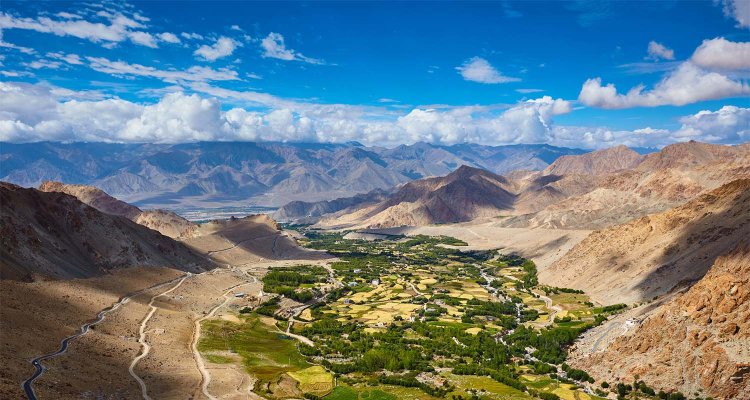
Wageningen World
Agriculture is very thirsty
Agriculture is the biggest consumer of fresh water in the world. And demand is set to rise, while availability falls. ‘Changes to the food system can go a long way towards solving the water scarcity problem.’
There’s an Arabic saying: In the desert, any water will do. This is in danger of coming true in Jordan, where there’s a growing shortage of fresh water. Farmers in this Middle-Eastern country are going to have to use purified wastewater for irrigation, and some of the country’s drinking water will have to come from desalinated seawater. These were the main solutions put forward in a series of dialogues organised in Jordan by WUR and stakeholders in 2022, on the water scarcity challenges the country will be facing by 2050.
‘Jordan’s demand for water is rising, partly because of the growing population and climate change,’ says Petra Hellegers, professor of Water Resources Management and co-organiser of the dialogues. Reusing wastewater and desalinating seawater are going to be a bitter necessity, says Hellegers. ‘The demand for water in Jordan in 2050 is expected to be four times the replenishable supply from rain and groundwater.’
Wageningen World
- This article appeared earlier in Wageningen World 2|2023, the magazine of Wageningen University & Research.
- Would you like to read more Wageningen World stories? Then subscribe to the digital magazine.
According to Unicef, Jordan is in the top three countries for water scarcity in the world. In order to supply households, industry and farms in the highlands and the fertile Jordan valley with water, deeper and deeper wells are being dug, but the groundwater supplies are not infinite. Hellegers: ‘By using up the groundwater you burden future generations with a huge problem. Besides, the approach to water scarcity in Jordan is significant for the entire region: Jordan is a stable country in an unstable region, and hosts a lot of Palestinian and Syrian refugees. It is in the interests of the international community to maintain stability there.’

That is why the Dutch ambassador and the government of Jordan visited WUR to bring policymakers, water managers, agriculturalists and food traders together. Hellegers: ‘The main aim of the meetings was to raise awareness of the problem and highlight the importance of looking for solutions together. One of the ways we did that was through the Water Allocation Game that was developed for the meetings as an interactive way to get a grip on the problems and possible solutions.’ The input for the game came from research on Jordan’s water problem by Hellegers and her colleagues.
Certain steps have to be taken before purified wastewater can be used in agriculture. Hellegers: ‘The transition from using fresh water to using purified wastewater in agriculture is expensive and requires not just technical changes but also legislative ones. If it is properly purified, wastewater is safe to use for irrigating crops, but the regulations do not permit it as yet. What’s more, the food safety norms will have to be relaxed in the countries that import tomatoes, dates, grain and other crops from Jordan too. That’s not something a country can tackle on its own. Other countries, donors, international organisations and food importers will have to get involved as well.’
Joint responsibility

Hellegers has long been arguing for integral policy, in Jordan as elsewhere. All too often, in her view, water and food are considered separately in policy and research, and in practice. ‘Dealing with water scarcity is a joint responsibility of the government, producers, purchasers and consumers, so you also have to seek solutions jointly.’
One third of global rice production uses meltwater from the Himalayas
At the UN Water Conference in New York in March, WUR announced it would be conducting additional research on water-resilient food systems over the next few years, worth 7.7 million euros. This research is funded by LNV, within the Knowledge Base programme Food and Water Security. WUR also organized a session entitled ‘Make water pivotal’ at the conference.
Hellegers: ‘That was the only session at the Water Conference that put water and food in the spotlight. And yet agriculture is responsible for 70 per cent of global water use. Changes in the food system can go a long way towards solving the water scarcity problem.’ During the session, it was decided to set up a global working group on water and food.
Recent studies by Hellegers’ Water Resources Management group make clear that if we carry on as we are now, water use in agriculture will double by 2050. Hellegers: ‘The impact of agriculture is increasing due to population growth and increasing meat consumption, as well as the demand for biofuels. Rising energy prices are driving up demand for crops used to produce bio-ethanol, such as maize and sugar cane.’
Indus and ganges
Sugar cane is a particularly thirsty crop. The watershed of the Indus in Pakistan is one of the places where more sugar cane is being grown now the demand for bio-ethanol is increasing. Along with the Ganges and the Brahmaputra, the Indus is one of the major rivers with their source in the Himalaya mountain range.
WUR vision on water
WUR researchers have formulated a joint vision on the theme of water: "Water is an integral part of ecosystems, food systems and human society and therefore should be considered a guiding principle in a transition towards sustainable systems that keep us within planetary boundaries."
A lot of rice, another thirsty crop, is grown in the region too. About one third of the total rice production in the world, and one quarter of the wheat production, use meltwater from the Himalayas. Climate change is making that a vulnerable lifeline. From a report by the International Centre for Integrated Mountain Development in Nepal that was published this year, we learn that if climate change continues at its current rate, the glaciers of the Himalayas will have lost 80 per cent of their current volume by the end of the century. That could impact two billion people who depend on that water for the drinking water, food production and energy generation.

Hester Biemans, a researcher in Water and Food Security at Wageningen Environmental Research, is collaborating on this large-scale study. She did research on the consequences of the melting of snow and glaciers in the Himalayas. ‘It is estimated that in Pakistan and India alone, about 130 million farmers are dependent on the meltwater from the Himalayas,’ says Biemans. ‘The entire food system downstream is largely geared to it. Due to climate change, the peak of the meltwater is changing: with higher temperatures, snow and ice are melting earlier in the year.’ Consequently, the water supply no longer coincides with the crops’ growing season, and more groundwater gets pumped up for irrigation later in the year.
Biemans: ‘In theory, farmers should be able to respond to gradual global warming by adapting the sowing time for the crops to tie in with the new timing of the meltwater peak. But success is not always guaranteed because rainfall patterns have become more unreliable and more extreme. That can lead to periods of drought and flooding.’
Biemans: ‘What is more, the population is growing fast, so there is a lot of pressure on the food production system. In future it could become difficult to feed the populations of the 16 countries that depend on water from the Himalayas. Pakistan is particularly at risk. It has the biggest irrigation system in the world and is extra dependent on river water.’
Economical irrigation
Biemans is working with PhD students and local research institutes to identify viable solutions. ‘Creating water reservoirs to store meltwater and the monsoon rain is an obvious option. Research is going on into more economical methods of irrigation and the farming of crops that have been bred to need less water. Another option is to replace crops like sugar cane and cotton that are not needed for food production with crops that use up less water and do contribute to the food supply. But of course, these are tricky decisions because sugar cane and cotton are usually more lucrative.’
The above-mentioned global working group will ponder these kinds of difficult considerations. Last September, this global working group got together in Wageningen to look at ways of reducing the water footprint of the food system. ‘Possibilities include stemming food waste, new eating habits, drought-resistant seeds and land use measures that would slow down water runoff,’ explains Hellegers. ‘Or stopping importing water-guzzling crops from countries suffering from water scarcity.’ The working group includes not only policymakers and researchers, but also representatives of the agro-industry, among them an avocado importer. ‘We hope this will inspire big players in the agro-industry, such as Cargill and Unilever, to give more thought to the water footprint of the products they purchase.’
These subjects will also be discussed at COP 28, the UN climate conference that was held in Dubai in early December. Hellegers: ‘I’m pleased about that because it’s high time the “water world” sat up and took notice of the importance of the food system and the role that water can play in tackling the effects of climate change. The way Jordan is drying up is a good example of that.’
Photos: Guy Ackermans, Shutterstock